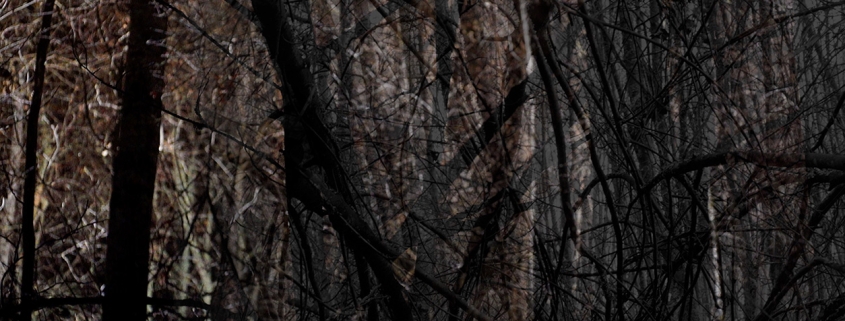UPRISING TREMOR:
ANTICIPATION, CONTEMPLATION,
DESTRUCTIVE PATTERNS
Patricia Rodas, Dragoș Alexandrescu
Curator: Cristina Moraru
STATEMENT
Exploring the relation of synchronicity (Carl Gustav Jung) between universal forces and personal experiences, between nature and emotion, between the tremor of leaves and the escalation of affection, between the relentless force of nature and the contemporary conflictual situations, between the tempestuous organicity of the Earth and the domestic aggression, Patricia Rodas and Dragoş Alexandrescu expose fragments of life attesting the vulnerability of the individual, the uncontrollable fear towards the nature’s unknown, and the fragility of the self towards social violence. Investigating the poetic rhythm of current social problems, the two artists create fictional narratives that interrogate the present, instituting an architecture of solitude as an emotional response towards brutality.
In the series of works The Most Intimate Hideaways, Patricia Rodas metaphorically reconstructs the anguishing visual sensation of the moment of domestic aggression. Distorting the frames, by altering the process of image exposure, the artist reconstitutes the internalized perception of the individual subjected to violence, whose anxiety distorts the visuality – understood here as an intimate relationship, constituted at the level of the act of seeing. Anticipating the destructive stereotypes of nature, Patricia Rodas identifies indirect relations between affective states and nature manifestations. Thus, nature – appreciated as the most intimate hidden place – is constituted as a shadow of the self, each frame photographed carrying the trace (Jacques Derrida) of the anxieties inherent to violent acts.
“Contemplating fall marks and burn marks” (verse from The Most Intimate Hideaways), Patricia Rodas extends the same research into the series of works Fallen Grace which poeticizes the relation between deserted nature and shattered bodies – in an unreal dynamic, at a moment of interference between grace and violence. The bodies’ tremor, while falling, reflects the vibrations of nature – the landscape adopting the movements of the collapsing bodies.The poetization of aggression is conditioned by the absence of the aggressor – whose physicality can only be imagined, despite its concretely represented force. Instead, what is revealed to us questions the gaze, role and position of a possible viewer – the secret witness of aggression – whose presence can be intuited as a consequence of translating the scene from an intimate, hidden, private space of a possible communion, to a natural, common, open, imprecise and unexpected place.
The uprising tremor, the deaf revolt, the murmur rebellion – as metaphors describing fragments of life, in which the situations intensely exceed our reactive perception – hide states of anxiety or fear, attributed either to violence (Patricia Rodas) or to the unknown (Dragos Alexandrescu). The video work: The Nature of Fear, made by Dragoş Alexandrescu, maintains the same deserted and wild natural frame, though transforming us from witnesses of violence to possible subjects of assault. Nature is no longer a refuge, an intimate hidden place; it becomes the object of our fears. Although we may notice the same absence of the aggressor, the effects of light instrumented creates not only a possible presence, but an implacable ubiquitousness. Nature is no longer just a frame of action, it becomes part of the action, showing its own strength. Fear captures everything and governs everything – reason, instincts, actions – distorting reality and manipulating our imaginary.

